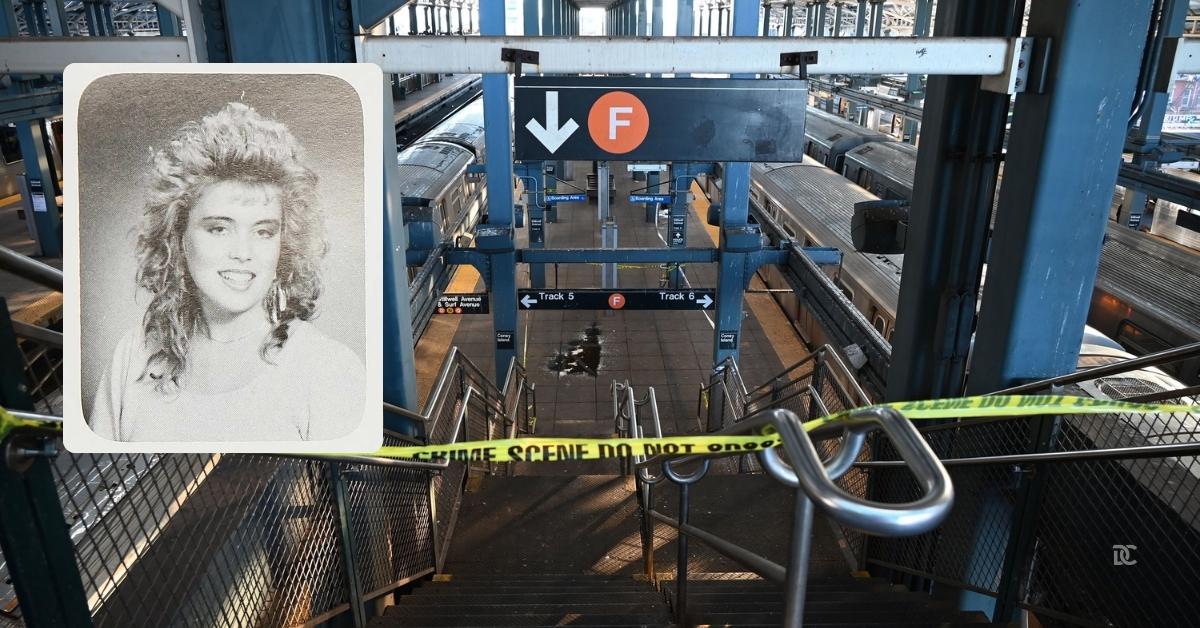On December 22, 2024, a seemingly ordinary morning commute in Brooklyn, New York, turned into a horrific crime scene. A woman sitting silently aboard an F train at Coney Island was doused with a lighter and set on fire. The public outcry was immediate and intense. For days, the authorities struggled to identify the victim, whose body was burned beyond recognition. Now, the New York City Police Department has announced her name: Debrina Kawam, a 57-year-old woman originally from Toms River, New Jersey. What emerges from her story is a chilling account of a “random” act of violence, a difficult life full of struggles, and a shocking ending that left bystanders horrified.
What Happened on the Subway?
Shortly after 7:30 a.m. on that frigid December morning, the F train rolled into its final stop in Coney Island. Riders were preparing to exit. Among them was 33-year-old Sebastian Zapeta-Calil, who, according to both witnesses and surveillance footage, approached a slumbering woman hunched against the doorway.
Prosecutors say he took out a lighter and ignited her clothing. Within seconds, the woman—later identified as Kawam—was engulfed in flames from head to toe. Onlookers stood in shock, with some capturing the incident on video while others screamed for help.
Strikingly, the suspect did not flee the train, police say. Instead, he is alleged to have calmly disembarked, sat on a bench near the platform, and watched as the flames overwhelmed Kawam. Video footage even shows him waving a piece of fabric in her direction, which authorities believe fanned the blaze rather than extinguished it. Meanwhile, frantic calls to 911 began pouring in, as witnesses implored police officers on the platform to respond.
Also Read
A few heart-stopping minutes later, officers and first responders rushed in, but by then, Kawam had sustained catastrophic burns. The firefighters managed to put out the flames, but it was too late to save her life. She was pronounced dead at the scene, her body so badly scorched that she could not be readily identified.
Who Was Debrina Kawam?
Initially, the NYPD announced that the woman’s age was around 61, but as they dove into fingerprint analysis and scoured medical and public records, her real identity—and story—came to light. Fifty-seven-year-old Debrina Kawam was a lifelong New Jerseyan who had graduated from Passaic Valley Regional High School in the mid-1980s, described in an old yearbook as having a “million dollar smile” and “secret ambition” to “party forever.”

At first glance, her early years appear ordinary. She was on the cheerleading squad and had bright, feathered hair typical of 1980s fashion. But pieces of her later life suggest a rocky journey. She faced a series of minor court citations—public drinking, trespassing, disorderly conduct—across various New Jersey localities and sometimes in suburban areas near New York. In 2008, she filed for bankruptcy, citing that she’d been unable to work due to illness. Her father’s death in 2009 left her grieving, posting online that he had been the “best father a daughter could have had.”
Neighbors and acquaintances recall that Kawam seemed to struggle with her health and finances. One said that an older woman, presumably her mother, used to look after Kawam at a Toms River property before the home was sold in 2024. Another story emerged about Kawam showing up at that property months after it was sold, apparently unaware her mother had moved away.
By 2024, police records show Kawam had drifted into the orbit of New York City’s homeless shelter system, staying briefly at a Bronx women’s shelter from late November to early December. She also received a minor summons for drinking on a sidewalk in Midtown Manhattan. Indeed, it looks as though she was bouncing between shelter stays, possibly living on the streets or searching for stability—making her particularly vulnerable to random acts of violence.
The Suspect: Who Is Sebastian Zapeta-Calil?
Thirty-three-year-old Zapeta-Calil stands accused of first-degree murder and arson. Police have publicly described the attack as unprovoked and random. Investigators say there’s no indication he knew Kawam, nor did they converse or have any dispute prior to the moment he allegedly lit her ablaze.
Local residents and officials further revealed that Zapeta-Calil is an undocumented immigrant from Guatemala who had already been deported once in 2018. After re-entering the United States, he found lodging in a Brooklyn shelter for men dealing with addiction issues. According to his peers at the shelter, he spent the past few months drifting, sometimes showing odd behavior, but never hinting at something so monstrous as setting a stranger on fire.
Following the attack, Zapeta-Calil lingered, apparently calm, on the platform bench. Surveillance cameras captured his clothing—gray hooded sweatshirt, wool hat, paint-splattered pants. Police circulated these images widely, and within days, three teenagers spotted a man matching his description on a different subway train in Brooklyn. They called 911, the train was halted, and authorities arrested Zapeta-Calil without further incident.
A grand jury indicted him late last week on murder and arson charges. If convicted, he could face life in prison or a similarly severe sentence. Federal immigration authorities have also placed detainers on him, meaning they want to be notified if he’s ever released from local custody, so they can potentially proceed with deportation. However, New York City’s sanctuary policies typically block cooperation with ICE, except in serious felony convictions—like homicide.
In the immediate aftermath of the attack, the NYPD and the Brooklyn District Attorney’s office faced a daunting task: identify the badly burned victim. Using every tool at their disposal, they cross-referenced Ms. Kawam’s fingerprints, DNA evidence, and even sifted through surveillance video hoping to find images of her face prior to the blaze. Medical examiners determined she was in her late 50s. Finally, on December 30, they confirmed her identity as Debrina Kawam, age 57.
The release of her name underscores a bleak reality about the lives of people who drift into homelessness or precarious housing. Their whereabouts often go untraced, and even their families can lose track of them. In Ms. Kawam’s case, her mother had moved, and the property that used to be their Toms River home was sold. According to reports, Ms. Kawam had shown up unannounced there months earlier, apparently unaware the house belonged to someone else. That confusion likely contributed to the difficulties police had in swiftly identifying her.
Police have now confirmed the identity of the victim of a horrific subway attack: 57-year-old Debrina Kawam of Toms River, New Jersey. What began as a puzzling, grisly scene in a Brooklyn train car has turned into an indictment of random violence, mental health struggles, and precarious lives in the city’s homeless population. Authorities have charged 33-year-old Sebastian Zapeta-Calil with first-degree murder and arson in connection with the crime. If convicted, he could face a lifetime behind bars.
For Ms. Kawam, the tragedy underlines how ephemeral and vulnerable life can be—especially for those who, for various reasons, find themselves on society’s fringes. Public reactions range from heartbreak to outrage, with many calling for renewed efforts to address subway safety, help the homeless, and better manage mental health services. Yet, in a city as vast and complex as New York, the question remains whether these calls will lead to tangible change or fade away, overshadowed by the next crisis. As her story recedes from headlines, the deeper systemic issues that contributed to her final moments may remain unaddressed—unless, collectively, we decide that one tragedy like this is already one too many.






